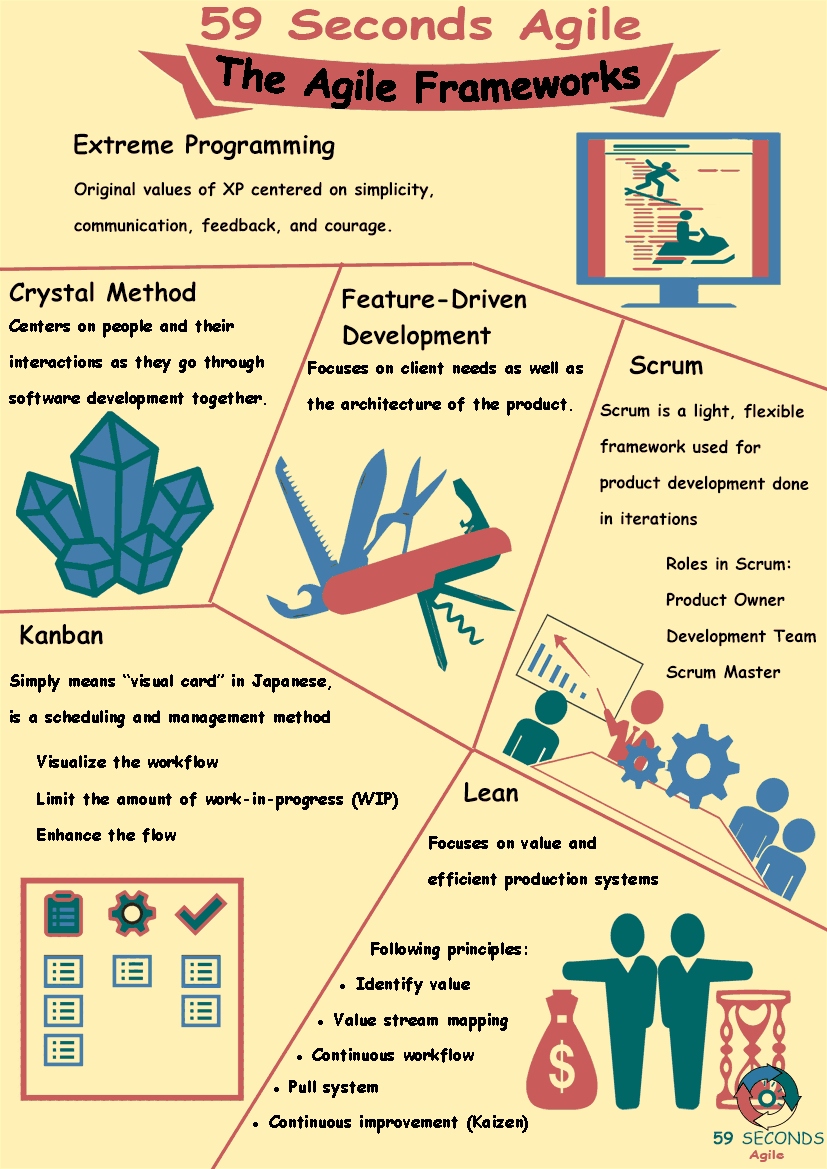Scrum Projects
A 59 Seconds Agile Training Video
Continue to Part 3 Below
Scrum Projects
A 59 Seconds Agile Article
This article provides an ‘Introduction to Scrum Projects’ and looks to discuss the metrics used for measuring project progress.
Scrum Projects
As you may have realized, the two questions are related. The first question is about measuring progress. We measure and put numbers to all kinds of things. This is because in project management, what get measured gets done. In most cases, traditional projects associate progress with metrics.
Traditional project managers present the progress of a project through metrics or score cards. The project can be red, yellow or green that shows a measurement that includes if the project is on schedule, how much of the scope is done and how far is the team to completion. This is not necessarily bad for the project, but definitely not enough to measure project success.
The second is related to the criteria of success. There is a difference between “working software” and according to “specifications”. Software can be perceived as working by the end-user when it meets their needs while not being according to specifications.
In many projects, developers spend a lot of time on details that do not add value to the end-user. Most of the time, it is only done because this is stated in the specifications, which are sometimes outdated. An ‘all or nothing’ delivery approach is a high risk of project failure because the product may not work during deployment.
Let us bring these two conditions together and how it is a problem in project management. The project manager promises to deliver a complete software package to the customer by a certain date. As the date approaches, the development team realizes that they cannot possibly finish the project in time and they scramble to finish the product.
Getting something in the hands of customers, no matter how bad the software works, but within the specifications is delivered at the end.
Did you realize that there is a problem?
Continue Reading —> Next
The Agile Development Frameworks
A 59 Seconds Agile Video Animation
Continue Reading —> Next
User Stories Applied
A 59 Seconds Agile Book Review
User Stories Applied by Mike Cohn is one of our favourite books on Agile User Stories. The book starts with an overview into user stories, and details what a user story is and the different aspects of them. He then discusses how to go about writing a user story, and provides details of the INVEST criteria that can be used to determine if the story is meeting all of its objectives. Next Mike gives an in depth discussion of who user stories are written for and where to begin when gathering the details for them. The book then discusses acceptance testing user stories, including how to go about specifying these criteria and the responsibilities of the development team and customers during this process.
Continue Reading —> Next
The Agile Frameworks
A 59 Seconds Agile Infographic

Continue Reading —> Next
Agile Scrum Master Training Course
Our Favourite Agile Books
We found these books great for finding out more information on Agile Scrum:
Continue Reading —> Next


